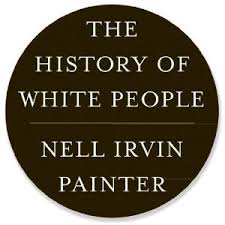
Since there has been rather persistent confusion about my Unherd piece I will clear up a few things. I am rather tired of talking about it now, as I “said my piece”, but sometimes things need to be done.
First, for many months (years), friends of various backgrounds (brown and non-brown) have been speaking to me of the issue of very self-righteous South Asian American (Indian, Pakistani, and Bangladeshi) “social justice warriors.” There’s nothing wrong as such being a social justice warrior and brown, but, the problem is that these individuals often accrue to themselves the full-weight of colonialism and centuries of oppression to add to their credibility and authority. The reason I finally punched out the Unherd piece is that an Indian scientist who I am familiar with made a reference to trauma and oppression on Twitter. This resulted in many “likes” and praiseworthy comments. It was a vague and amorphous statement and could mean anything, but the response made it clear that most people took it to be that they were alluding to the weight of colonialism and racism.
The problem I had with this is I know that this individual, a Brahmin raised in India, is from a literally rich family. Rich enough to pay undergraduate American tuition for international students in full. And, rich enough to pay graduate school tuition when otherwise this person would have to take up a teaching assistantship. This is not a person who is well-off in the Indian context. They’re well off in the American context.
This is an extreme case. But it illustrates a more general problem. People who by dint of their brown skin claim to be, or allow people to believe they are, marginalized and oppressed. The vast majority of brown Americans can tell you stories of racial discrimination and prejudice. That is true. But are these experiences determinative in their lives? Does their race define and limit them in a deep and powerful manner?
I would argue not. Today the Americans of brown background are flourishing. Indian Americans in particular are socioeconomically advanced, and now, becoming culturally prominent. Just like their white upper-middle-class peer, Indian Americans are benefiting from the system, and flourishing within it. Their realized outcomes are very different from African and Latino Americans. Some of the same is also applicable to poorer newer ethnic groups, such as Bangladeshis, who begin much lower on the socioeconomic ladder but are placing their children into elite public schools like Stuyvesant.
Second, selective immigration from India has resulted in a very atypical Diaspora. Many who responded to my piece argue that selective immigration is the whole story, so why bring caste into it? Because the criteria used have skewed the India Amerian community in a way where it is not representative of India at all. I am personally not bothered by this. But again, when issues such as caste oppression come up in the USA, non-Indians may not realize when talking to Indian Americans that they will almost never interact with a Dalit, who are 15% of India’s population (one could argue that except for Gujarat the “Cow Belt” is also totally underrepresented due to the way immigration has worked). Many Brahmin Indian Americans I know are vociferously against caste (sincerely, and in their actions!). But to me, this is a laudable idealism, not something that comes out of historical brutality, because their ancestors were willing executors of the system. In this way, they are like upper-class white people who wish for a more egalitarian economic system. Their views are sincere, but it comes from idealism, not trauma.
As a brown person from Bangladesh people who knew where I was from would always make assumptions about my background, as Bangladesh was the byword for incredible poverty for the second half of the 20th century. Those that did not know my family was of professional background would ask naive questions, such as “did you grow up in a hut?” I found it amusing, but I did make it clear that I couldn’t personally speak to the poverty and deprivation which were such serious concerns for everyone about the country of my birth. In Bangladesh, I was a very privileged person. In my day to day life in the USA, this was irrelevant, but I wasn’t going to go around speaking with authority about how horrible grinding Third World poverty was. It was just in many ways just as abstract for me as it was for my white classmates. Honestly, if I did grow up in a hut I’d probably brag about it since it would make my Horatio Alger story so much more inspiring.
Overall, the point of the piece is that when you make identity so important to the content of someone’s arguments and the force of their views, it creates a massive incentive for individuals to cultivate and shade their identity to add credibility. Ergo, a Nigerian American whose family is wealthy from brutal oil extraction which results in human rights violations and crimes in their ancestral homeland will likely not expose this fact when castigating a middle-class white American about their “white skin privilege.”
Brown American should just accept what they are in the main: a relatively privileged people from whom America works, who have to deal with some incidents of racism in their lives.
